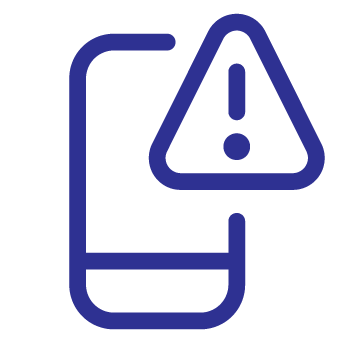
Preparing for disasters in advance can have a big impact on your safety and recovery in an emergency. You have the power to protect yourself, your loved ones, and our community. Make emergency preparedness your superpower!
There are four key steps to being prepared for an emergency. Following these four steps can make it easier before, during, and after any disaster that may strike.
 |
Make a PlanDiscuss with your family how you will respond, stay informed, and contact one another during emergency situations in which key services like electricity, water, or first responders may not be available. Once your initial plan has been created, make it a point to discuss it at least once a year and make updates as needed. A family plan should include:
To get started with your plan, download a template provided by the Federal Emergency Management Agency (FEMA). Once your plan is complete, consider laminating a paper copy AND saving an electronic version to a cloud drive and on your phone. That way, it is accessible in a variety of situations. |
 |
Build a KitHaving basic supplies on hand can make a disaster less stressful, and in some cases, the difference between life and death. Assemble an emergency supply kit with enough supplies for everyone in your house for seven days. You don’t have to do it all at once, and it doesn't have to be difficult or expensive. Start with the basics (i.e. water, food, first aid, and hygiene items) that can fit in a backpack or other portable container. Add to it as you are able (i.e. flashlight, extra batteries, portable charger, blankets, and cash) and consider unique supplies that pertain to different seasons. Understand the unique needs of you and your family and take those into account when building your kit.
|
 |
Know Your NeighborsNeighbors helping neighbors enhances community resilience and ensures that emergency resources will reach those in the greatest need. If you can help one of your neighbors, that could be one less emergency call that needs to be made. Reducing the strain on emergency services by helping each other can add up to make a big difference in a crisis. All this means that knowing your neighbors and identifying those who might need extra help during a disaster is critical to increasing Austin’s disaster preparedness. You can prepare yourself and then get involved in the community to encourage disaster preparedness:
You are the help, until help arrives! |
 |
Stay InformedKnowing where you can get reliable information during an emergency is crucial. During a disaster, unreliable websites and social media can have incorrect, out of date, or even false information. It is important to know ahead of time where you will get critical updates about what is going on in the community. Take the following steps now so you are better informed from reliable sources when disaster strikes:
Learn more about staying informed during an emergency.
Emergency AlertsAs a public safety agency, City of Austin’s Office of Homeland Security & Emergency Management (Austin HSEM) can alert the public via phone, email, and other methods. What is the Integrated Public Alert and Warning System (IPAWS)?IPAWS is the national emergency alert system of the United States. IPAWS can only be used by alerting authorities who have gone through FEMA’s authorization process. As of fall 2025, Austin HSEM is an IPAWS alerting authority. IPAWS uses standalone technology to alert the community via cell phones, broadcast media, and weather radios, and other methods. IPAWS messages fall into three main categories:
Learn more about IPAWS here.
|

